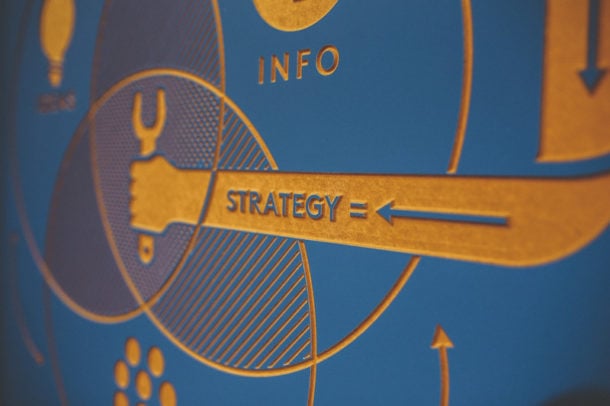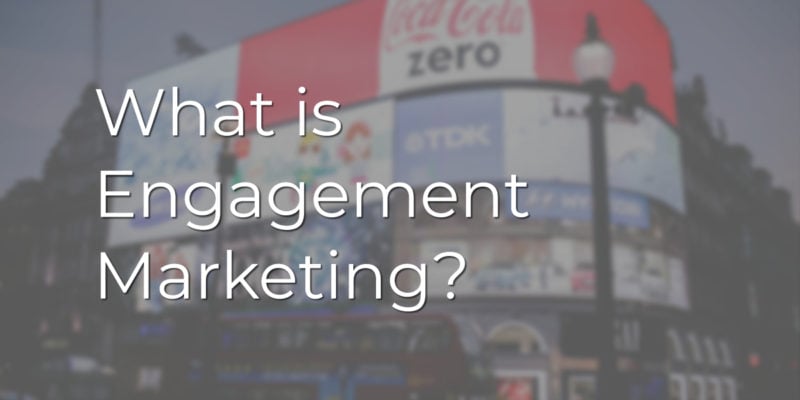Most marketing today feels forced. It’s like that pushy salesperson at the mall. Nobody wants that.
Your customers smell inauthenticity a mile away. Who can blame them? They’re bombarded with ads every second.
What if you could break through the noise? What if you could actually connect with your audience and build something real?
That’s engagement marketing. Ditch the old-school “buy now” tactics. Have real conversations instead.
“The best marketing doesn’t feel like marketing.” – Tom Fishburne, Founder of Marketoonist.
Instead of shouting at your audience, invite them to a party. Offer valuable information. Listen to their feedback. Show them you genuinely care about what they need.
Sound good? Keep reading to learn how engagement marketing can change the way you connect with people.

Why This Matters to You
You’re not just reading this out of curiosity, right?
Maybe you’re a small business owner struggling to stand out. Or a marketing professional searching for something that actually works. Perhaps you’re an entrepreneur looking to build a loyal following.
Whoever you are, you’re probably tired of wasting time and money on tactics that don’t work. You want results. Engagement marketing might just be your answer.
Ready to dive deeper? Let’s talk about what engagement marketing really is and why it’s so powerful.
What is Engagement Marketing?
Engagement marketing treats your customers like people, not spreadsheet numbers. It builds genuine connections and turns them into raving fans who tell their friends about you.
Also known as:
- Experiential marketing
- Event marketing
- On-ground marketing
- Live marketing
- Participation marketing
- Loyalty Marketing
- or Special events
“Content builds relationships. Relationships are built on trust. Trust drives revenue.” – Andrew Davis
Think of it like dating. You wouldn’t propose on the first date, right? Same goes for your customers.
Instead of bombarding them with sales pitches, get to know them. Understand their pain points. Offer solutions that genuinely help.
How It Actually Works
Engagement marketing isn’t rocket science, but it does require a mindset shift. Here’s the breakdown:
- Listen first. What’s your audience saying on social media? In forums? Through direct feedback? What are their real concerns? What do they actually love about your brand?
- Then interact. Respond to comments. Ask questions. Start conversations. Be authentic and show you care.
- Provide real value. Share helpful content. Answer questions. Offer solutions. Don’t just talk about yourself – focus on how you can help them.
- Build relationships over time. These interactions foster trust and loyalty. Your audience sees you as a partner, not just another company trying to sell them something.
Does this sound different from what you’re doing now?
The Old Way vs. The Engagement Way
Would you rather be bombarded with ads? Or have a meaningful conversation with a brand that actually cares about you?
The choice seems obvious, but most companies still operate the old way.
| Old-School Marketing | Engagement Marketing |
| Company talks, customer listens | Real conversations happen |
| Chase short-term sales | Build long-term relationships |
| Interrupt with ads and cold calls | Provide value and genuine interactions |
| Treat everyone the same | Treat customers as individuals |
Engagement marketing isn’t just a trend. It’s how businesses will connect with customers moving forward.
Tools for Engagement Marketing

Don’t worry, you don’t need to reinvent the wheel here. You’re probably already using many of the tools needed for engagement marketing. It’s more about how you use them.
- Social media becomes your virtual hangout spot. Share valuable content, start conversations, respond to comments and questions. Think of it as hosting a gathering, not broadcasting announcements.
- Email marketing transforms from spammy sales blasts to personalized conversations. Share content that matters to each subscriber. Offer exclusive deals to loyal customers. Gather their feedback and actually use it.
- Content marketing means creating blog posts, videos, or podcasts that answer real questions. Address actual pain points your audience faces. Stop talking about how great your product is and start helping people solve problems.
- Live events and webinars let you connect on a deeper level. Host Q&A sessions. Run workshops. Create experiences people remember and talk about.
- Community building gives your customers a place to connect with each other. Facebook groups, online forums, Slack channels – wherever they can ask questions, share experiences, and feel like they belong.
- Customer feedback tools like surveys, polls, and feedback forms show you value their opinions. But here’s the key – you actually have to listen and act on what they tell you.
Which of these tools are you already using? How could you use them differently?

Why Emotional Intelligence Matters
All the tools in the world won’t help without the right approach. Engagement marketing requires emotional intelligence. You need to understand and connect with your audience as humans.
What does this look like in practice?
You practice active listening. Pay attention to what customers say and what they don’t say. Read between the lines.
You show empathy. Put yourself in their shoes. Understand their emotions and needs, not just their buying patterns.
You stay authentic. Be genuine and transparent. People can tell when you’re faking it.
You practice patience. Relationships take time. You can’t rush trust or loyalty.
You’re not just trying to sell something. You’re building a lasting connection.
How well do you really know your customers as people?
The Real Goal Goes Beyond Likes and Shares

Likes, shares, and comments are nice. But engagement marketing aims for something deeper.
You want to foster a loyal community that trusts your brand. They believe in what you’re doing and feel confident in your products or services.
They choose you over competitors consistently. Not just once, but again and again because they actively prefer your brand.
They become your advocates. They love your brand so much they can’t help but share it with friends, family, and followers.
They provide valuable feedback because they’re invested in your success. They want to help you improve.
Think of it like building a sports team. You want players who are committed, passionate, and willing to go the extra mile. That’s what engagement marketing can do for your business.
What would it mean for your business if customers felt this way about your brand?
How to Measure Your Engagement Success (Without the Headache)

You don’t need a statistics degree to track progress. Focus on metrics that actually matter:
- Conversion rate shows if people take desired actions after interacting with your content. Are they signing up for your email list? Making purchases? Taking the next step?
- Customer lifetime value reveals how much revenue you generate from each customer over their entire relationship with your brand. This number should grow as relationships strengthen.
- Social media engagement goes beyond vanity metrics. Are people having real conversations? Joining your online community? Sharing meaningful interactions?
- Customer satisfaction shows up in reviews, recommendations, and repeat business. Happy customers tell others about their experience.
- Brand sentiment reflects how people talk about your brand online. Are they using positive language? Defending you when others complain?
Track these over time. Engagement marketing requires consistent effort, so adjust your strategy based on what the data tells you.
Myths & How to Overcome Challenges in Engagement Marketing

Engagement marketing isn’t always smooth sailing. Let’s address some misconceptions and practical challenges you’ll face.
“90% trust peers on social networks (even strangers); only 15–18% trust brands.” – Danny Brown
Myth: “Only Big Brands Can Do Engagement Marketing”
Wrong. Anyone can build stronger customer relationships. Small businesses often have an advantage because they can be more nimble and personal. You can respond faster, adapt quicker, and provide more personalized attention than massive corporations.
Myth: “It Takes Too Much Time”
True, engagement marketing requires time and resources. But think about what you’re building – a valuable asset that supports your brand for years. There are tools and strategies to streamline the process and maximize your time investment.
Myth: “It’s All About Social Media”
Social media is powerful, but it’s not everything. Email marketing, content creation, events, and community building all play important roles. Choose the channels where your audience spends time.
Challenge: Measuring ROI
Engagement marketing isn’t always as easy to measure as traditional advertising. That doesn’t mean you can’t track progress. Focus on customer lifetime value, conversion rates, and brand sentiment rather than just immediate sales.
Challenge: Staying Consistent
Engagement marketing requires long-term commitment. Create a consistent schedule for content, responses, and interactions. Your audience needs to know they can count on you to show up.
Challenge: Avoiding the Sales Pitch
This is about relationships, not transactions. Focus on providing value and helping customers rather than pushing products. The sales will follow naturally when trust is established.
Which of these challenges concerns you most?
The Action Plan: Your Engagement Marketing Strategies 
Ready to start? Here’s how to put engagement marketing into practice:
- Know your target audience inside and out. Who are you trying to reach? What interests them? What keeps them up at night? What do they value most?
- Choose your channels wisely. Where does your audience spend time online? Focus your efforts on platforms where they’re most active rather than trying to be everywhere.
- Plan your content calendar. Map out content in advance so you can stay consistent. Mix educational, entertaining, and promotional content to provide ongoing value.
- Engage authentically. Respond to comments, ask thoughtful questions, start real conversations. Show genuine interest in what your audience has to say.
- Track what matters. Monitor key metrics and adjust your strategy based on what works. Don’t get caught up in vanity metrics that don’t drive business results.
Engagement marketing is an ongoing process. It takes time, effort, and willingness to experiment. But the rewards – customer loyalty, increased brand awareness, and a thriving community – make it worthwhile.
What’s your first step going to be?

Key Takeaways and Next Steps
Let’s recap what we’ve learned about engagement marketing:
- It’s about building relationships: Forget about one-time sales, focus on fostering genuine connections with your audience.
- It’s a two-way street: Listen to your customers, respond to their feedback, and collaborate with them to create a better experience.
- It’s more than social media: Utilize a variety of channels and tactics to engage your audience, including email, content marketing, events, and community building.
- It’s measurable: Track your progress using metrics like customer lifetime value, conversion rates, and brand sentiment.
- It’s an ongoing process: Stay consistent, experiment, and never stop learning about your customers.
Your Engagement Marketing Checklist
Ready to take the next step? Here are a few actionable tips to get you started:
-
Craft a Compelling Brand Story: What makes your brand unique? Why should people care? Share your story in a way that resonates with your audience.
-
Create Valuable Content: Don’t just talk about your products or services. Share helpful tips, industry insights, create ebooks or flipbooks and entertaining stories that your audience will love.
-
Get Personal: Address your audience by name, respond to their comments individually, and tailor your content to their interests and needs.
-
Encourage Participation: Ask questions, run contests, and invite your audience to share their thoughts and experiences.
-
Measure and Analyze: Track your results and use the data to refine your strategy and make better decisions.
The Bottom Line
Engagement marketing represents a fundamental shift in how businesses connect with customers. Focus on building relationships, providing genuine value, and fostering community to create loyal followers who support your brand long-term.
Your customers are waiting for brands that treat them like humans, not numbers. Will you be one of them?
Frequently Asked Questions About Engagement Marketing
Get answers to the most common questions about building authentic relationships with your audience
What exactly is engagement marketing and how is it different from regular marketing?
Engagement marketing focuses on building genuine relationships with your customers rather than just pushing sales messages. Instead of one-way communication where you talk and customers listen, it creates two-way conversations where you listen, respond, and collaborate with your audience. Think of it like the difference between a pushy salesperson and a helpful friend who genuinely cares about solving your problems.
How long does it take to see results from engagement marketing?
Engagement marketing is about building relationships, which takes time. You might see initial engagement within weeks, but meaningful results like increased customer loyalty, higher conversion rates, and word-of-mouth referrals typically develop over 3-6 months of consistent effort. The key is staying patient and focusing on providing genuine value rather than expecting immediate sales.
What’s the best social media platform for engagement marketing?
There’s no single “best” platform – it depends entirely on where your audience spends time. LinkedIn works well for B2B relationships, Instagram for visual brands, TikTok for younger audiences, and Facebook for community building. Focus your efforts on 1-2 platforms where your target customers are most active rather than trying to be everywhere at once.
How do I measure the success of my engagement marketing efforts?
Look beyond vanity metrics like likes and follows. Track customer lifetime value, conversion rates from engaged users, brand sentiment in comments and reviews, repeat purchase rates, and referral traffic from social shares. These metrics show whether your engagement is actually building valuable relationships that drive business results.
What should I do if customers leave negative comments or feedback?
Respond quickly, professionally, and publicly when appropriate. Acknowledge their concern, apologize if you made a mistake, and offer to solve the problem. Take detailed conversations to private messages but keep the initial response public to show other customers how you handle issues. Negative feedback handled well can actually strengthen trust and show your commitment to customer satisfaction.
How often should I post content for engagement marketing?
Quality trumps quantity every time. It’s better to post valuable content 2-3 times per week consistently than to post daily with mediocre content. Focus on creating posts that genuinely help your audience, answer their questions, or start meaningful conversations. Your posting frequency should match what you can sustain while maintaining high quality.
Can small businesses compete with big brands in engagement marketing?
Small businesses often have significant advantages in engagement marketing. You can be more personal, respond faster, adapt quicker to customer feedback, and build closer relationships with individual customers. Big brands struggle to match the authentic, personal touch that small businesses can provide naturally.
What types of content work best for engagement marketing?
Content that solves problems, answers questions, or provides genuine value performs best. This includes how-to guides, behind-the-scenes content, customer success stories, industry tips, and content that asks thoughtful questions to spark discussion. Avoid overly promotional content and focus on being helpful first, promotional second.
How do I avoid coming across as too salesy in my engagement efforts?
Follow the 80/20 rule – 80% of your content should provide value, education, or entertainment, while only 20% should be directly promotional. When you do promote your products, focus on how they solve customer problems rather than just listing features. Ask questions, share customer stories, and genuinely engage with responses to show you care about more than just making sales.
Should I respond to every comment and message I receive?
Aim to respond to as many genuine comments and messages as possible, especially questions and meaningful feedback. You don’t need to respond to every emoji or simple “thanks” comment, but acknowledge thoughtful interactions. Set realistic response time expectations – within 24 hours is good, within a few hours is excellent. Quality responses matter more than responding to absolutely everything.
